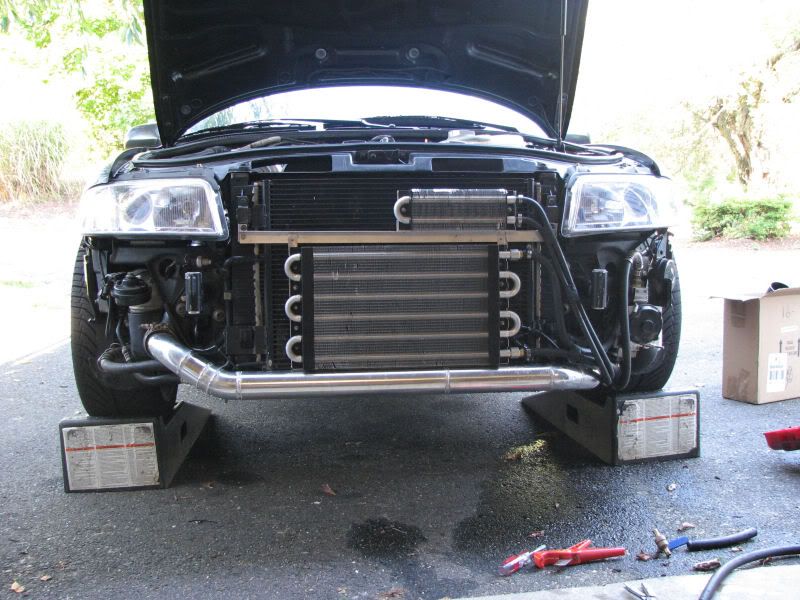
Originally Posted by
M-Hood

But like I said, for the street the air-air is just more efficient over the long run. Air-water is better in the short run or when using something like ice in the tank to make the water even colder. But I dont think someone that drives the car is going to be stopping at every store they pass to keep adding ice to the tank. lol
Here is what Bell Intercoolers has to say right on their web site.
Big picture, Bell's statement has some merit. Unfortunately, there are a lot of assumptions that go into that statement that I'm not sure everyone who is interested in this discussion is aware of. The big benefit of an A2W is that you can put in a core with a low pressure drop and compact shape in the engine bay to cool the charge air (both very good qualities) with better heat transfer than an A2A core of the exact same dimensions. You can then run the water lines and reject heat to a larger core somewhere else on the vehicle.
Consider this: the convection coefficient of water is many times greater than air.
http://en.wikipedia.org/wiki/Heat_transfer_coefficient
Water can have a value of ~500 to 10,000 W/m^2*k
Air can be around ~10 to 100 W/m^2*k
Using Q = h*A*dT, you can see that even when you compare the higher end of the spectrum for air and the lower spectrum for water, water will be about FIVE times more effective at convective heat transfer. (There are three primary modes of HT, but convective HT is going to drive what's going on in a FMIC.... no pun intended lol).
With a conservative ratio of 5, an A2A FMIC will need to have ~5 times the surface area of a A2W IC for the same application (at the point of heat transfer with the charge air... the exterior HX will still be limited by air, just like an A2A). If we were to evaluate this using real world figures, that ratio could become much bigger than 5. What this means is that you can use a low pressure-drop core that is easy to locate in the engine bay and then run water lines to a nice, thin HX with lots of surface area and little volume that you could tuck behind an A4 bumper and come out with the same effect as someone who had to buy an S4 bumper to cram in a huge A2A core. Lower pressure drop and none of the worry over "lag" from having lots of volume in the IC core.
I'm not saying that A2W is the best way to go for everyone, everyday, everywhere, but there are definitely some up sides that can be properly applied to many situations, including daily driven cars. For what it's worth, I went with a nice 3" ER FMIC, so I'm not nay-saying A2A, but want to point out the merits of A2W.













 Reply With Quote
Reply With Quote




 2008cc - 6262 - Lugtronic - ID1700Xs - IECVA1s - 605@27psi
2008cc - 6262 - Lugtronic - ID1700Xs - IECVA1s - 605@27psi 




Bookmarks